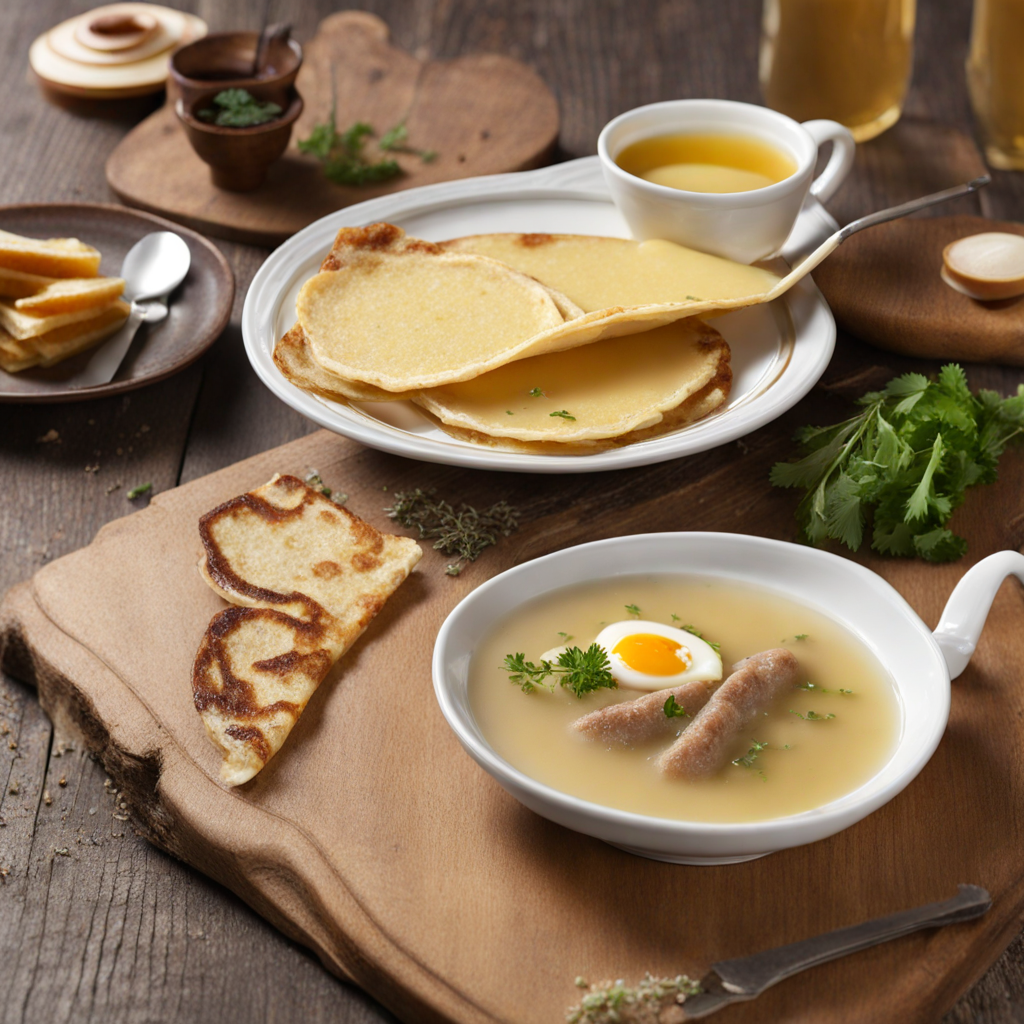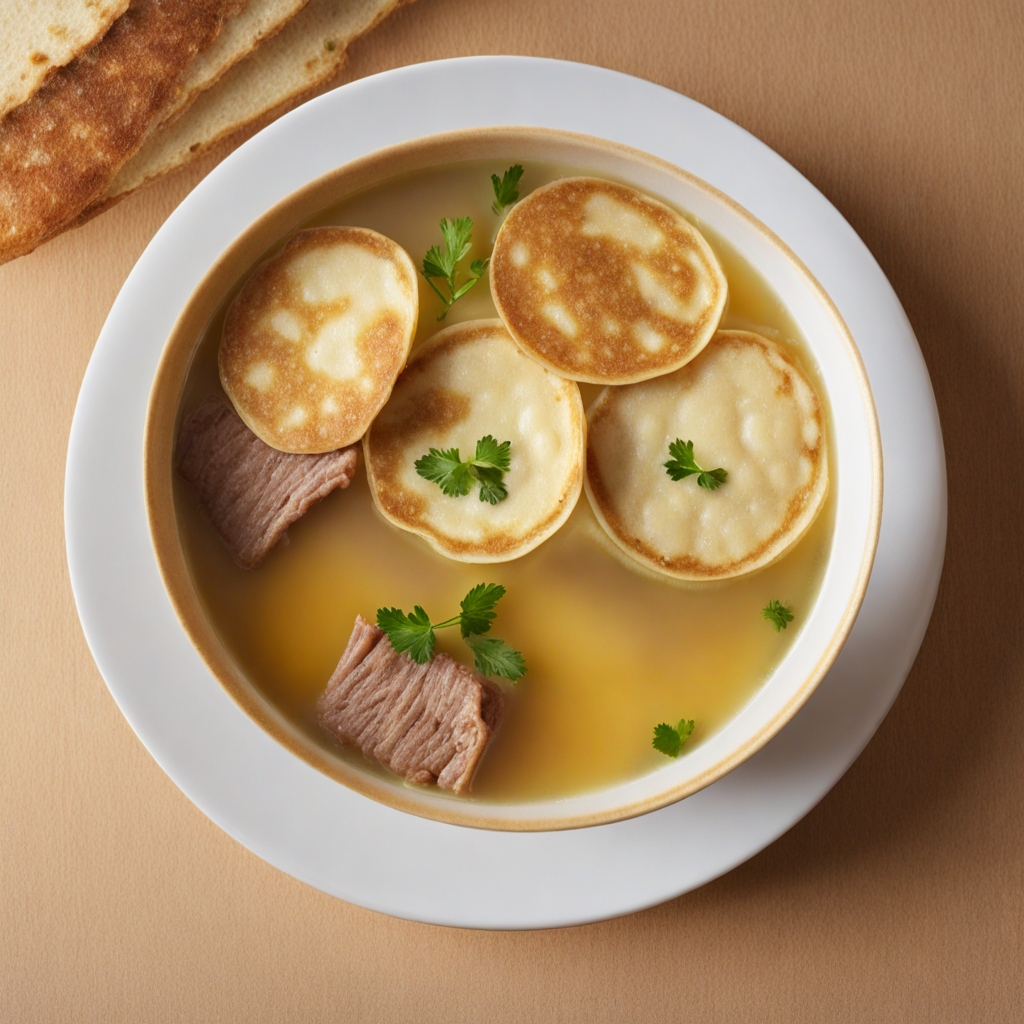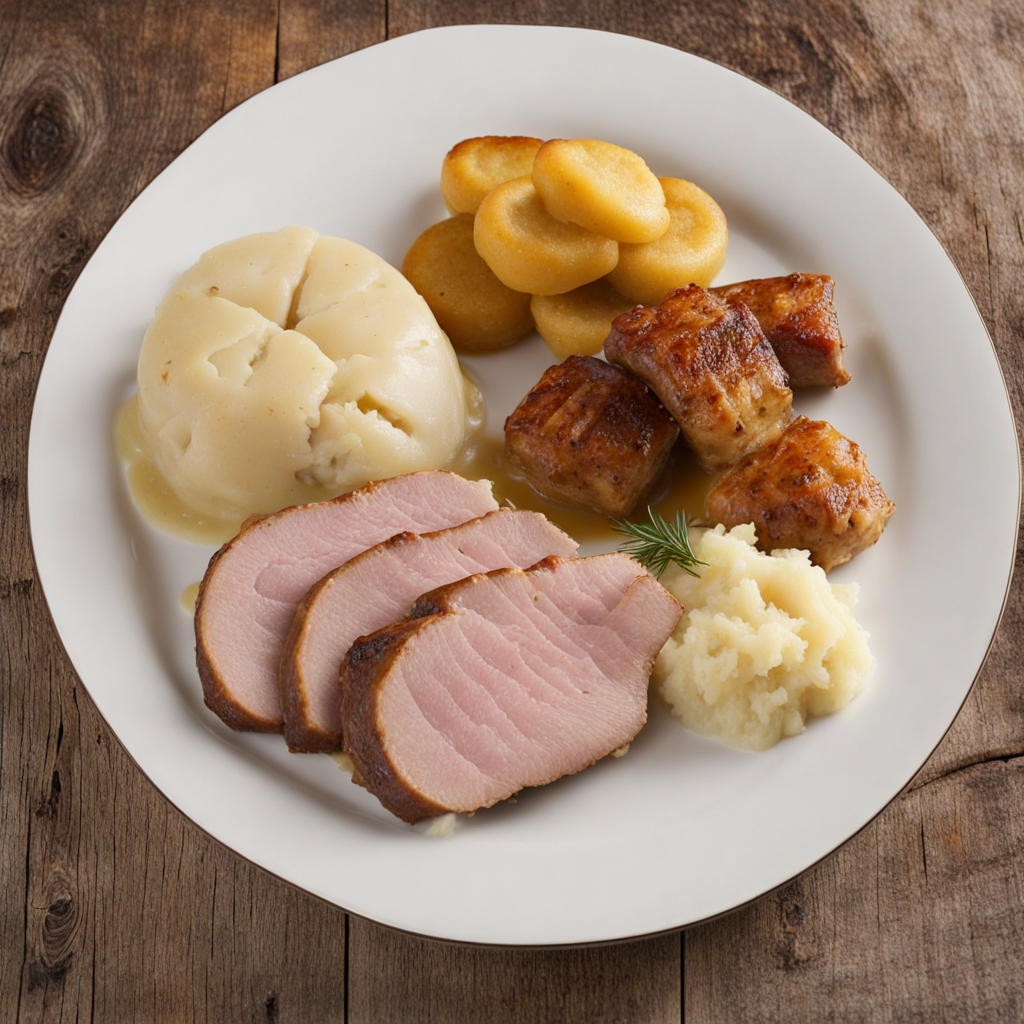Frittatensuppe
Frittatensuppe is a delightful Austrian soup that combines the comforting warmth of broth with the unique texture of thinly sliced pancakes, known as "Frittaten." The base of this dish is typically a rich and flavorful beef or chicken broth, simmered to perfection to extract all the savory goodness from the meat and bones. The broth is clear and aromatic, often seasoned with herbs like parsley and chives, which contribute a fresh note that elevates the entire dish. Each spoonful offers a warm embrace, making it a popular choice for both cold days and as a starter in a traditional Austrian meal. The star of Frittatensuppe is undoubtedly the Frittaten themselves, which are made from a simple batter of eggs, flour, milk, and a pinch of salt. This mixture is cooked into thin crepes, then rolled and sliced into delicate strips that float gracefully in the steaming broth. The texture of these pancake strips is soft and slightly chewy, creating a pleasing contrast with the liquid. Each bite allows you to savor the savory broth while experiencing the delightful mouthfeel of the Frittaten, making it a dish that is both hearty and light at the same time. Frittatensuppe is often garnished with a sprinkle of fresh herbs and sometimes a touch of lemon zest or a squeeze of lemon juice to brighten the flavors. It is a dish that embodies the essence of Austrian comfort food, celebrating simplicity and quality ingredients. Whether enjoyed as a starter or a light meal, Frittatensuppe offers a taste of Austria that is both nostalgic and refreshing, inviting food lovers to explore the rich culinary traditions of this beautiful country.
How It Became This Dish
Frittatensuppe: A Culinary Journey Through Austria Origins and Early History Frittatensuppe, a traditional Austrian soup, is a delightful dish that encapsulates the essence of comfort food within the rich tapestry of Austrian culinary heritage. The name "Frittatensuppe" translates directly to "pancake soup," reflecting its two primary components: a flavorful broth and thinly sliced pancakes known as Frittaten. The origins of this dish can be traced back to the 18th century, a period when culinary practices began to evolve significantly across Europe, influenced by the mingling of cultures and the rise of the bourgeoisie. The roots of Frittatensuppe are deeply intertwined with the broader tradition of soup making in Austria. Soups have long been a staple in Austrian households, serving as a nourishing and economical way to utilize leftover ingredients. The introduction of pancakes into the soup reflects the ingenuity of home cooks who sought to create a filling meal from minimal resources. The use of pancakes also hints at the widespread influence of crepe-like dishes found in various European cuisines, including the French crêpe and the Italian crespelle. Cultural Significance Frittatensuppe holds a special place in Austrian culture, often served as a starter in festive occasions and family gatherings. It embodies the warmth and hospitality of Austrian society, where food is not merely sustenance but an integral part of social interaction. The dish is particularly popular during colder months, providing a hearty and comforting meal that brings people together. In Austria, soups are an essential part of the culinary repertoire, and Frittatensuppe is often associated with traditional Sunday dinners and holiday celebrations. It is a dish that evokes nostalgia, reminding many Austrians of their childhoods spent around the family table. The preparation of Frittatensuppe is often a communal activity, where family members gather to create the pancakes and simmer the broth, enhancing the sense of togetherness that food fosters. Moreover, Frittatensuppe is often served in upscale restaurants and traditional inns, showcasing its versatility and appeal across different social strata. It is a dish that can be enjoyed by all, from humble households to fine dining establishments, highlighting its enduring popularity and cultural significance. Development and Variations Over Time The evolution of Frittatensuppe reflects broader culinary trends in Austria and Europe. In its traditional form, the soup is made with a clear beef or chicken broth, enriched with aromatic vegetables like carrots, celery, and parsley. The Frittaten, or pancakes, are typically made from a simple batter of flour, eggs, milk, and salt, cooked until golden brown and then rolled and sliced into thin strips before being added to the soup. As Austrian cuisine began to absorb influences from neighboring countries, variations of Frittatensuppe emerged. In some regions, chefs began to experiment with the broth, incorporating local herbs and spices to enhance the flavor profile. For example, in Tyrol, a mountainous region of Austria, the addition of regional herbs such as chervil or lovage can be found, reflecting the local agricultural practices and tastes. In urban areas, especially Vienna, Frittatensuppe became a canvas for culinary creativity. Influenced by the multicultural environment of the capital, chefs began to introduce ingredients such as mushrooms, dumplings, and even seafood into the soup, creating new interpretations that appealed to a more diverse palate. The city's rich culinary scene has led to the emergence of gourmet versions of Frittatensuppe, where high-quality ingredients and refined techniques elevate this humble dish to fine dining status. Additionally, the rise of vegetarianism and veganism in recent decades prompted chefs to develop plant-based versions of Frittatensuppe. Vegetable broths replace meat-based stocks, and alternative ingredients like tofu or chickpea flour pancakes are used to cater to health-conscious diners, ensuring that the dish remains relevant in contemporary culinary discourse. Frittatensuppe Today Today, Frittatensuppe remains a beloved dish in Austria, often served at family gatherings, holiday feasts, and even at local festivals. It is a dish that transcends generations, with recipes passed down through families, each adding their unique touch. The simplicity of its preparation makes it accessible, while the depth of flavor and comforting nature ensure it holds a cherished place in the hearts of those who enjoy it. In Austria, Frittatensuppe is commonly found in traditional eateries known as "Gasthäuser," where it is served alongside other local specialties. It is also a popular choice in ski lodges, where the warmth of a steaming bowl of soup is particularly welcome after a long day on the slopes. Its presence in both rustic and refined dining establishments speaks to its adaptability and enduring appeal. Moreover, Frittatensuppe has made its mark beyond Austria's borders. As Austrian cuisine gains recognition on the global stage, Frittatensuppe is increasingly featured on international menus, inviting food lovers to experience a taste of Austrian tradition. Culinary festivals, cooking classes, and food tours often highlight this dish, educating visitors about its history and significance. Conclusion Frittatensuppe is more than just a soup; it is a culinary symbol of Austria's rich cultural heritage and a testament to the nation's love for comfort food. From its humble beginnings as a resourceful dish for feeding families to its status as a beloved staple in both homes and restaurants, Frittatensuppe reflects the evolving landscape of Austrian cuisine. As it continues to adapt to contemporary tastes while remaining true to its roots, Frittatensuppe invites us to savor not only its flavors but also the stories and traditions woven into every bowl.
You may like
Discover local flavors from Austria







